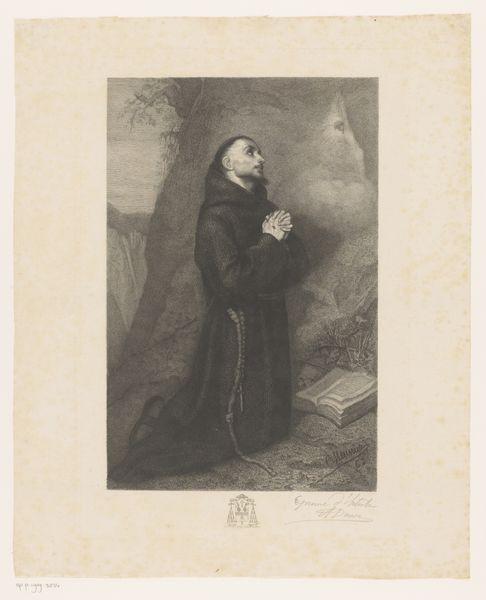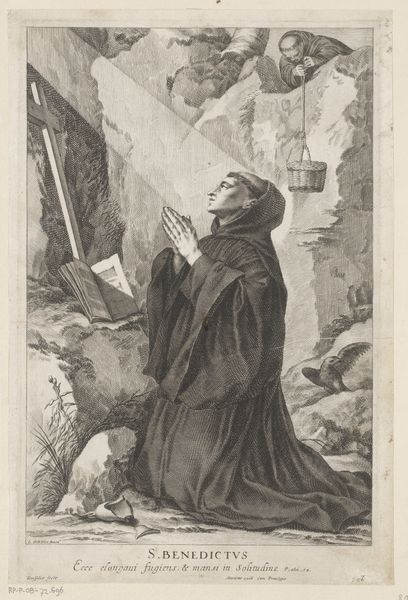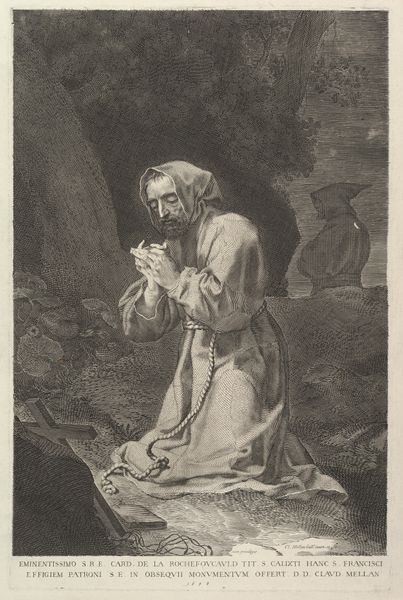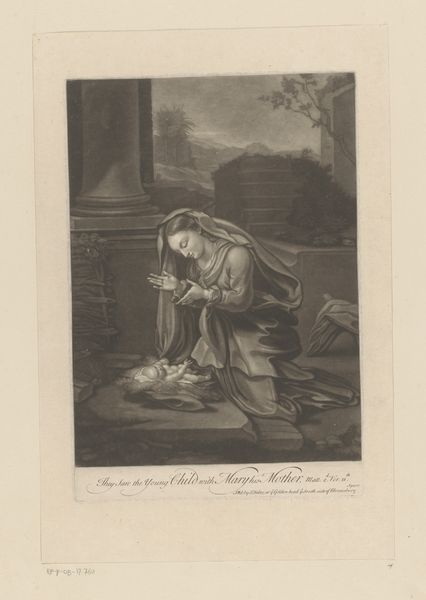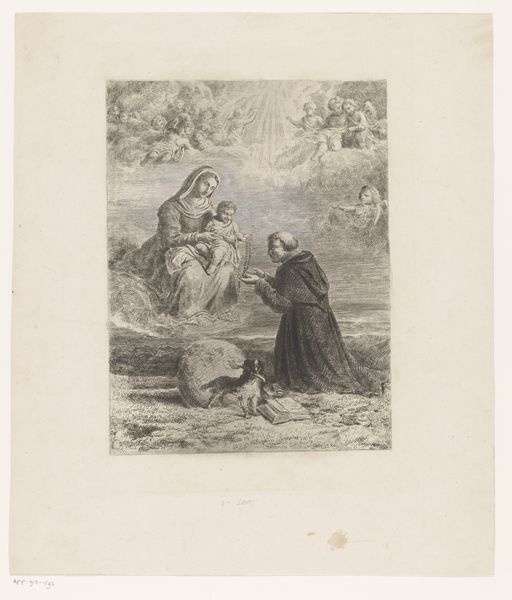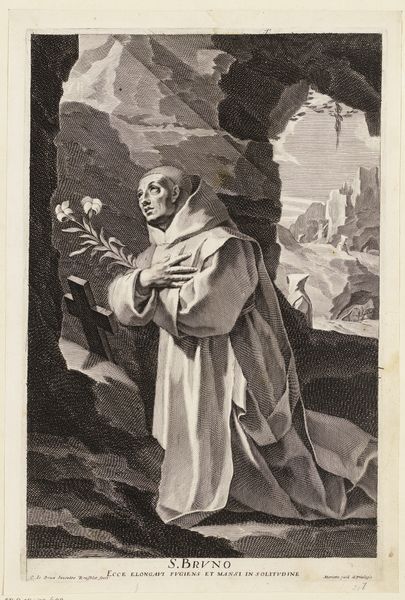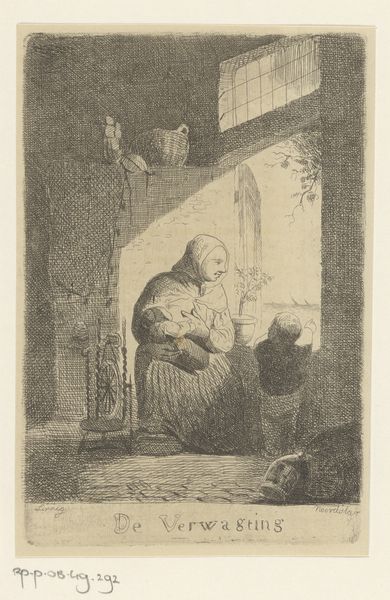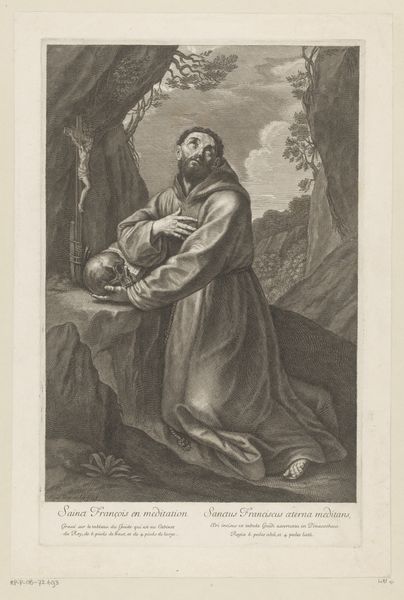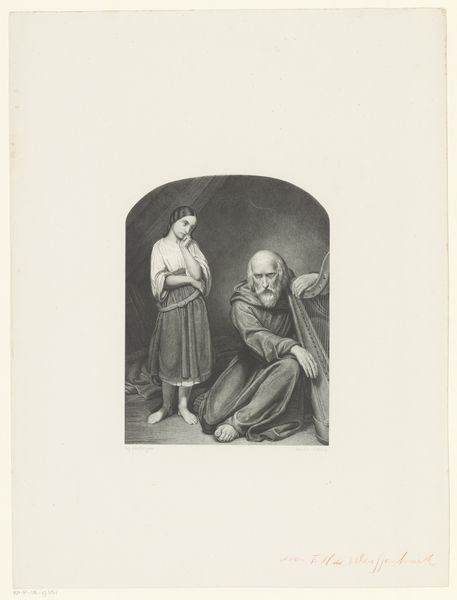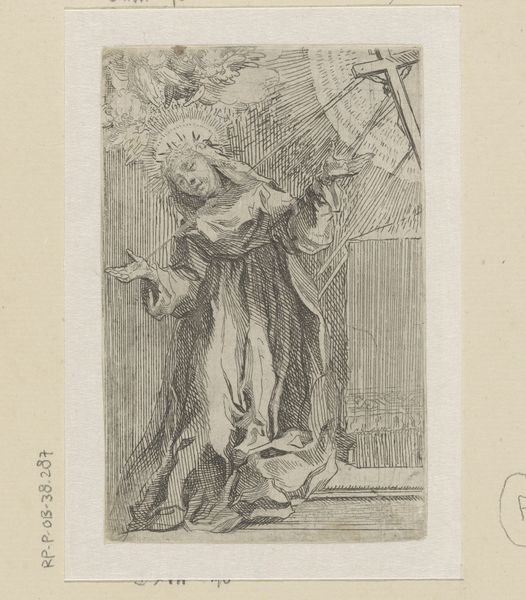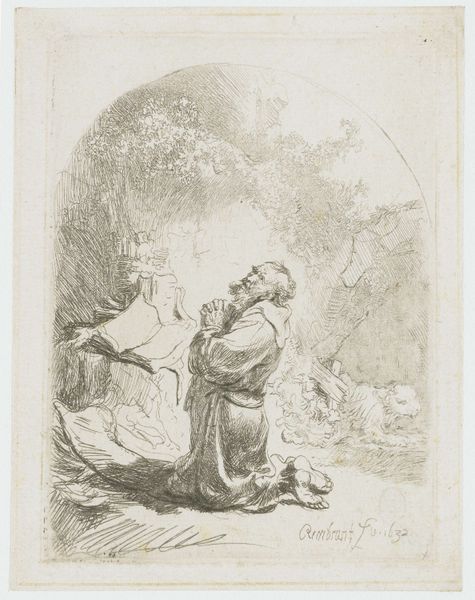
Dimensions: height 432 mm, width 356 mm
Copyright: Rijks Museum: Open Domain
Curator: This is Auguste Danse’s 1862 print, "Praying Francis of Assisi with an Open Bible and Crucifix," currently residing here at the Rijksmuseum. What’s your initial reading of the piece? Editor: Immediately, I'm struck by the textural contrasts. The rough, almost chaotic hatching defining the landscape, against the smoother rendering of Francis and his simple garments. There's a distinct feeling of romantic piety emanating from this work. Curator: That feeling definitely arises from the materials and process used here. Danse chose engraving, a medium known for its sharp lines and capacity for detailed rendering, on paper. But note how he doesn't pursue pristine perfection. Instead, he embraces a certain sketchiness. Editor: True. The engraving simulates the look of a charcoal or pencil drawing. You can almost feel the artist's hand at work, sketching, revising. The softness feels less formal than traditional religious works. Curator: And that's important for understanding the image's social context. In the 19th century, prints became a widely accessible means of distributing art. It makes you wonder about the audiences who consumed such imagery of religious devotion and what such reproduction represents to a piece like this. Editor: Absolutely. The way light falls across the saint's face, highlighting his upward gaze… It emphasizes his spiritual transport. Also consider the open Bible and crucifix – overt symbols, but rendered with such delicacy that they invite contemplation, rather than dictate it. What's particularly intriguing is the crucifix appearing in the background, as if integrated into nature, making a case of symbolic fusion. Curator: Perhaps that fusion alludes to the natural world's connection to the divine for the artist, Francis himself representing poverty, humility, and connection to nature. One might reflect upon what it represents that such ideas become popularized commodities within burgeoning industrial capitalist culture, using inexpensive mass production print technologies. Editor: It leaves me pondering the nature of faith and artistic interpretation. What constitutes devotion, and how do materials and form play into our understanding of those feelings? Curator: Yes, a reflection worth pondering. These kinds of prints give us a different insight than a history book or a formal painted commission could, reflecting and informing faith practices during their time.
Comments
No comments
Be the first to comment and join the conversation on the ultimate creative platform.
